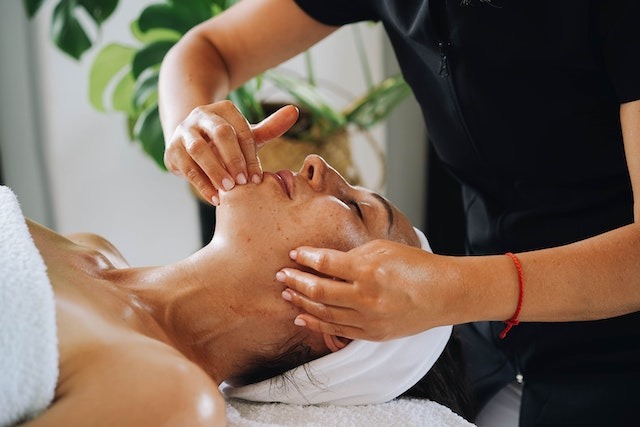Elevate Your Look: The Ultimate Guide to Hair Toppers
In the world of hair styling, hair toppers have emerged as a revolutionary solution for individuals experiencing thinning hair or hair loss. Whether due to age, genetics, or medical conditions, many people find themselves seeking ways to add volume and density to their natural hair. Enter hair toppers: versatile, lightweight, and natural-looking hairpieces designed to seamlessly blend with existing hair and create the appearance of fuller, thicker locks. In this comprehensive guide, we’ll explore everything you need to know about hair toppers, from their benefits and applications to styling tips and maintenance.
Understanding Hair Toppers
Hair toppers, also known as wiglets or crown extensions, are hairpieces designed to cover specific areas of the scalp where hair is thinning or sparse. Unlike wigs, which cover the entire head, Hair Topper are smaller in size and typically clip onto the existing hair at the crown or top of the head. They come in various sizes, shapes, and densities to cater to different degrees of hair loss and styling preferences.
Benefits of Hair Toppers
- Natural-Looking Volume: Hair toppers are designed to seamlessly blend with natural hair, creating the appearance of voluminous locks without the need for invasive procedures or extensions.
- Customizable Coverage: Whether you’re dealing with localized thinning at the crown or diffuse hair loss throughout the scalp, hair toppers offer customizable coverage to address specific areas of concern.
- Versatility: Hair toppers come in a variety of styles, lengths, and colors, allowing for versatile styling options to suit different preferences and occasions.
- Comfort and Convenience: Unlike traditional wigs, which can feel heavy and cumbersome, hair toppers are lightweight and comfortable to wear, making them suitable for daily use.
- Confidence Boost: By enhancing the appearance of hair volume and density, hair toppers can boost confidence and self-esteem for individuals dealing with hair loss or thinning hair.
Application Process
The application of a hair topper typically involves the following steps:
- Preparation: Style your natural hair as desired and ensure that the area where the hair topper will be attached is clean and free of product buildup.
- Positioning: Place the hair topper over the targeted area of the scalp and adjust it to ensure a secure and comfortable fit.
- Attachment: Use the built-in clips or combs on the hair topper to secure it to your natural hair, ensuring that it is firmly in place.
- Blending: Gently style and blend the hair topper with your natural hair using a comb or brush to create a seamless and natural-looking finish.
Styling Tips
Once your hair topper is securely in place, you can style it just like your natural hair. Here are some tips for styling your hair topper:
- Heat Styling: Most hair toppers are made from heat-resistant synthetic fibers or human hair, allowing for styling with heat tools such as straighteners, curling irons, and blow dryers. However, it’s essential to use heat styling tools on low to medium heat settings to prevent damage to the fibers.
- Accessorize: Enhance your hairstyle with accessories such as headbands, clips, and hair ties to add flair and personality to your look.
- Experiment with Hairstyles: From sleek and straight to voluminous curls, hair toppers can be styled in various ways to suit different occasions and moods. Experiment with different hairstyles to find what works best for you.
- Blend with Natural Hair: To achieve a seamless blend between your hair topper and natural hair, consider using styling products such as texturizing sprays, serums, or dry shampoos to add volume and texture as needed.
Maintenance
Proper maintenance is essential for prolonging the lifespan of your hair topper and keeping it looking its best. Here are some maintenance tips to keep in mind:
- Cleaning: Wash your hair topper regularly using a mild shampoo and conditioner formulated for synthetic fibers or human hair. Gently massage the shampoo into the fibers, rinse thoroughly, and allow the topper to air dry before styling.
- Storage: When not in use, store your hair topper in a clean, dry place away from direct sunlight and heat sources to prevent damage to the fibers.
- Brushing: Use a wide-tooth comb or a brush designed for synthetic hair to gently detangle and style your hair topper, starting from the ends and working your way up to the roots.
- Avoiding Friction: Minimize friction and tangling by avoiding activities that may cause rubbing or pulling on the hair topper, such as sleeping on rough surfaces or wearing hats or scarves with abrasive materials.
In Conclusion
Hair toppers offer a transformative solution for individuals experiencing hair loss or thinning hair, providing natural-looking volume and coverage without the need for invasive procedures or extensions. With their customizable coverage, versatility, and ease of application, hair toppers empower individuals to reclaim their confidence and feel beautiful in their own skin. By understanding the benefits of hair toppers, mastering the application process, and incorporating styling and maintenance techniques into your routine, you can enjoy fuller, thicker-looking hair that enhances your natural beauty and boosts your self-esteem. Whether you’re dealing with temporary hair loss or seeking a long-term solution, hair toppers offer a practical and stylish way to elevate your look and embrace your unique sense of style.
